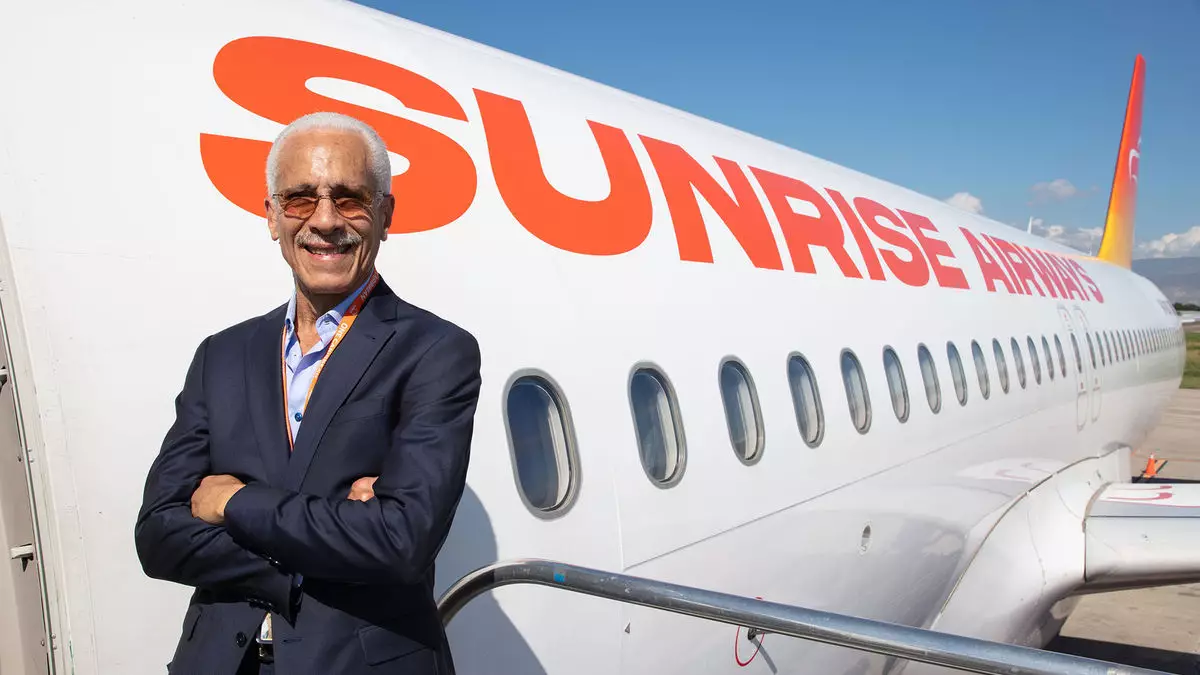The Caribbean region is on the cusp of a revolutionary shift in interisland tourism as the year 2025 approaches. Despite the long-standing hurdles such as exorbitant airfare, inconvenient layovers, and a lack of adequate routes, there is a renewed sense of optimism among industry players. The prospect of enhanced connectivity between islands presents an enormous opportunity, not only for tourists from outside the region but also for Caribbean locals yearning to explore nearby destinations. This article delves into the current landscape of interisland travel in the Caribbean, examining both the challenges and the potential for growth.
Meagan Drillinger’s insightful analysis reveals the core issues plaguing the Caribbean’s travel sector, with high costs and limited options frequently cited as significant barriers. As Nicola Madden-Greig, the outgoing president of the Caribbean Hotel & Tourism Association (CHTA), candidly expressed, air transport remains one of the primary challenges hindering the region’s tourism growth. This constraint is not merely a nuisance; it significantly impacts how Caribbean nations position themselves in the global travel market.
The current state of interisland airlines, such as InterCaribbean and Caribbean Airlines, reflects an industry in transition. Though certain airlines are expanding their operations, the existing frameworks seem to inhibit seamless travel experiences. The crux of the matter lies in the historical perspective; the Caribbean has not effectively marketed itself as a multi-destination paradise, akin to Europe. Therefore, the need for reinvention and a new marketing strategy is more urgent than ever.
Organizations and airlines are now pursuing renewed efforts to strengthen airlift options in the Caribbean. There’s a palpable push among significant players to enhance regional connectivity. Some airlines are reassessing routes and trying to fill gaps that have traditionally hampered travel.
Madden-Greig’s initiative to showcase the diverse cultures and experiences across islands, such as those found in Jamaica, St. Lucia, and Barbados, offers a glimpse into how a more integrated travel experience could be marketed. Different landscapes, culinary options, and local traditions contribute to the Caribbean’s vast appeal. However, transforming this potential into actual travel experiences requires strategic collaboration and marketing efforts.
Buncamper of Sunrise Airways emphasizes the need for efficiently connecting islands without frustrating overnight layovers. His commitment to streamlining travel reflects the sentiment shared by many in the industry. Nevertheless, the stark reality is that high operational costs, namely taxes levied by different jurisdictions, make interisland travel financially burdensome. In some instances, taxes can comprise almost 60% of a ticket’s cost, making it vital for stakeholders to advocate for reform in this area.
To cultivate a vibrant interisland tourism culture, effective collaboration among airlines and governments is crucial. Steve Bennett’s comments underline a common struggle within the region: punitive tax structures that make air travel to and between islands increasingly unaffordable. As he aptly noted, this inefficiency undermines the region’s economic prospects, inhibiting growth in intra-regional tourism.
The introduction of open-skies agreements could be a game-changer, allowing for more competitive pricing and increased flight options. Even a simple reduction of air travel taxes could create a much more favorable environment for multi-island tourism. This would not only attract international tourists but also encourage Caribbean residents to explore their backyard.
Bennett also pointed to existing ferry routes facilitating travel between some islands; however, it is evident that these options still leave considerable gaps for travelers. Improving both air and sea routes could promote a more cohesive travel experience across the Caribbean.
Despite these challenges, there are glimmers of hope on the horizon. Airlines like InterCaribbean and Winair have plans to roll out more regional services, which could potentially revolutionize interisland travel. Further, newer players like LIAT 2020 have made their intentions clear to enter the market with a revitalized focus on improved connectivity.
With the cooperation of all involved—from airlines to tourism boards—it is possible that 2025 will see a significant transformation in Caribbean interisland travel. Bringing down ticket prices and enhancing access to multiple destinations could redefine the travel experience in the region. As industry stakeholders gather to solve these issues, the Caribbean’s true potential may soon be realized—a melting pot of vibrant cultures, diverse experiences, and an appealing travel landscape. But critical to this evolution will be the commitment to doing it right.


Leave a Reply